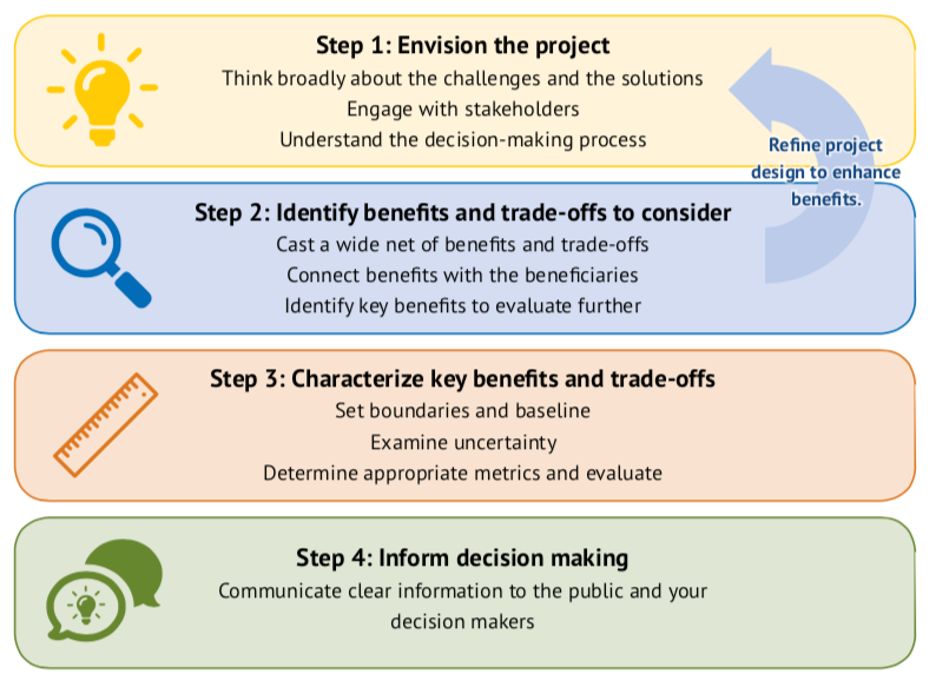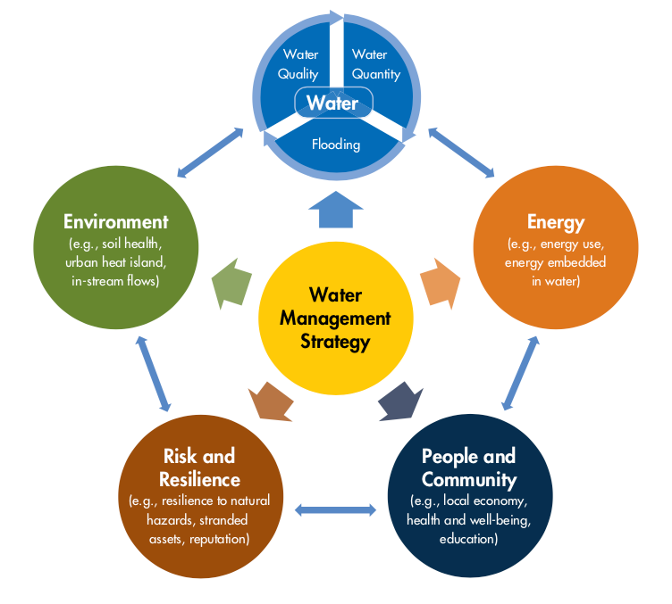What is the Multi-Benefit Framework?
The Multi-Benefit Framework provides a four-step process for incorporating multiple benefits and trade-offs into water management decisions. As a result, the guidance provided by the framework can readily be incorporated into existing processes. The Multi-Benefit Framework can, for example, be used to help:
- Expand the benefits and costs in traditional benefit-cost analyses or triple bottom line analyses;
- Determine project prioritization schemes that account for multiple benefits and trade-offs;
- Develop sustainability targets that meet economic, community, and environmental needs;
- Build relationships among public and/or private entities and co-finance projects;
- Streamline proposal guidelines to encourage systematic consideration of multiple benefits, while allowing funders to track progress toward these benefits; and
- Engage with stakeholders and community members in water management decisions.
What are the Details?
The Multi-Benefit Framework is meant to be flexible and adaptable. Here, we provide the basic four-step process for identifying, evaluating, and incorporating multiple benefits into water management decisions.

Step 1: Think broadly about the project vision and potential project or program options. As part of this step, water managers are encouraged to meaningfully engage with stakeholders to help to define a positive project vision that contributes to community goals and can provide important benefits for stakeholders.
Step 2: Determine the potential benefits and trade-offs of the project options, regardless of whether these outcomes can be quantified. To facilitate this process, we defined five benefit themes: (1) Water; (2) Energy; (3) Environment; (4) People and Community; and (5) Risk and Resilience. These themes provide a starting point for identifying and organizing benefits and costs methodically and transparently.

Step 3: Conduct quantitative and qualitative analyses for the benefits and trade-offs of greatest interest to stakeholders and decision-makers. This step helps with determining methods for evaluating the benefits and trade-offs, as well as setting a baseline for comparing projects and incorporating uncertainty into the analysis.
Step 4: Inform decision making through translating and communicating results of the analyses to decision makers and stakeholders. As a result of effectively communicating the benefits and trade-offs, decision makers will be equipped to make a more informed and transparent decision.
Next, find applications and resources for incorporating multiple benefits into your own work!
Explore the Multi-Benefit Framework


